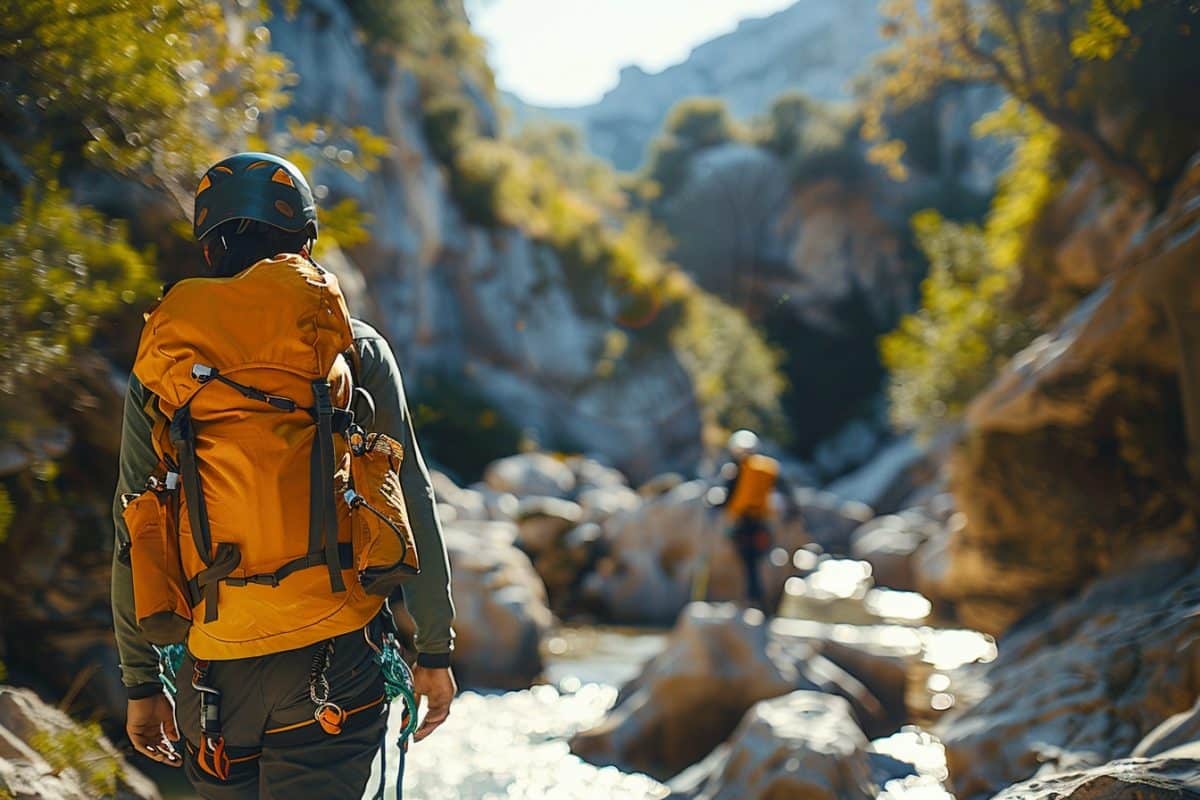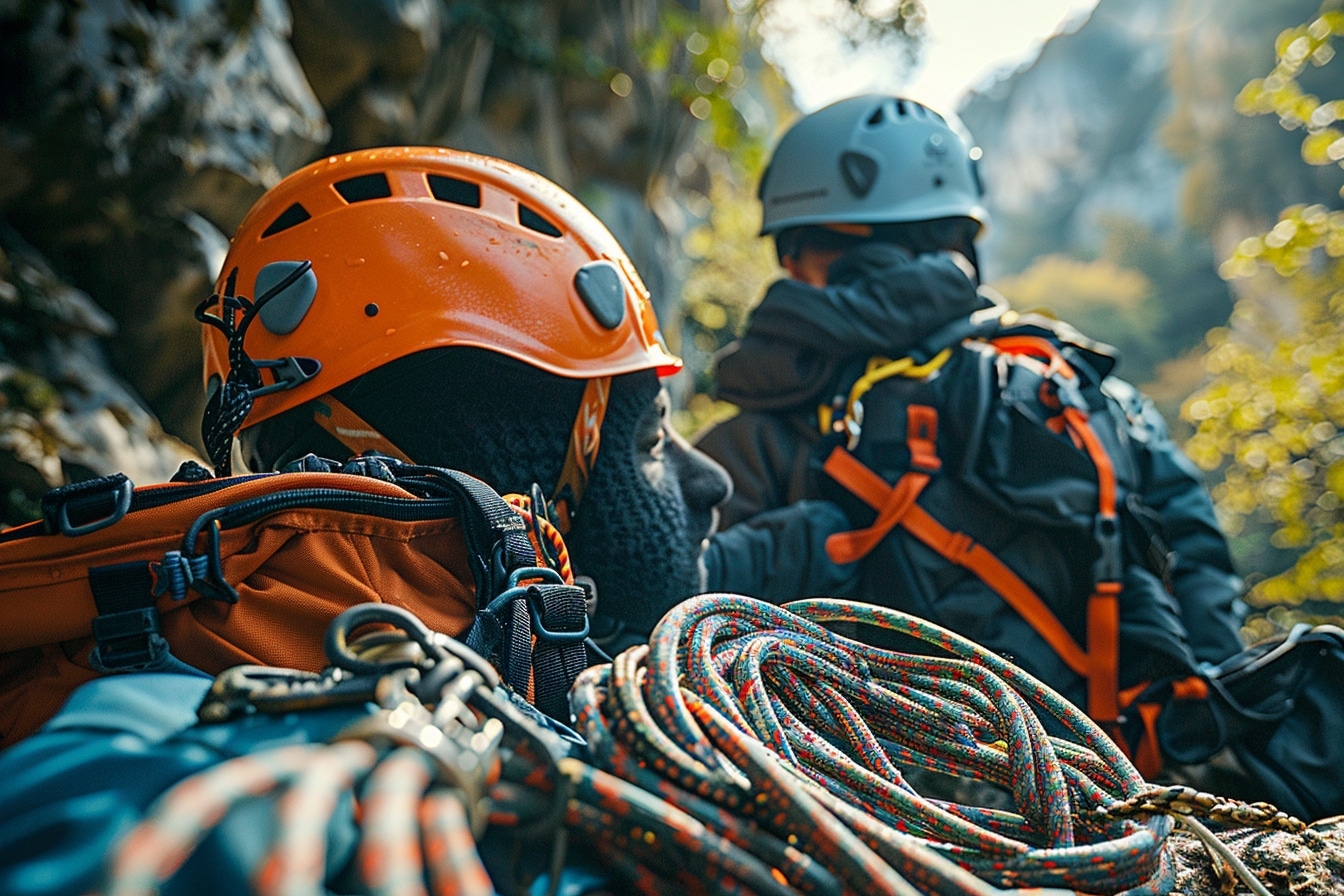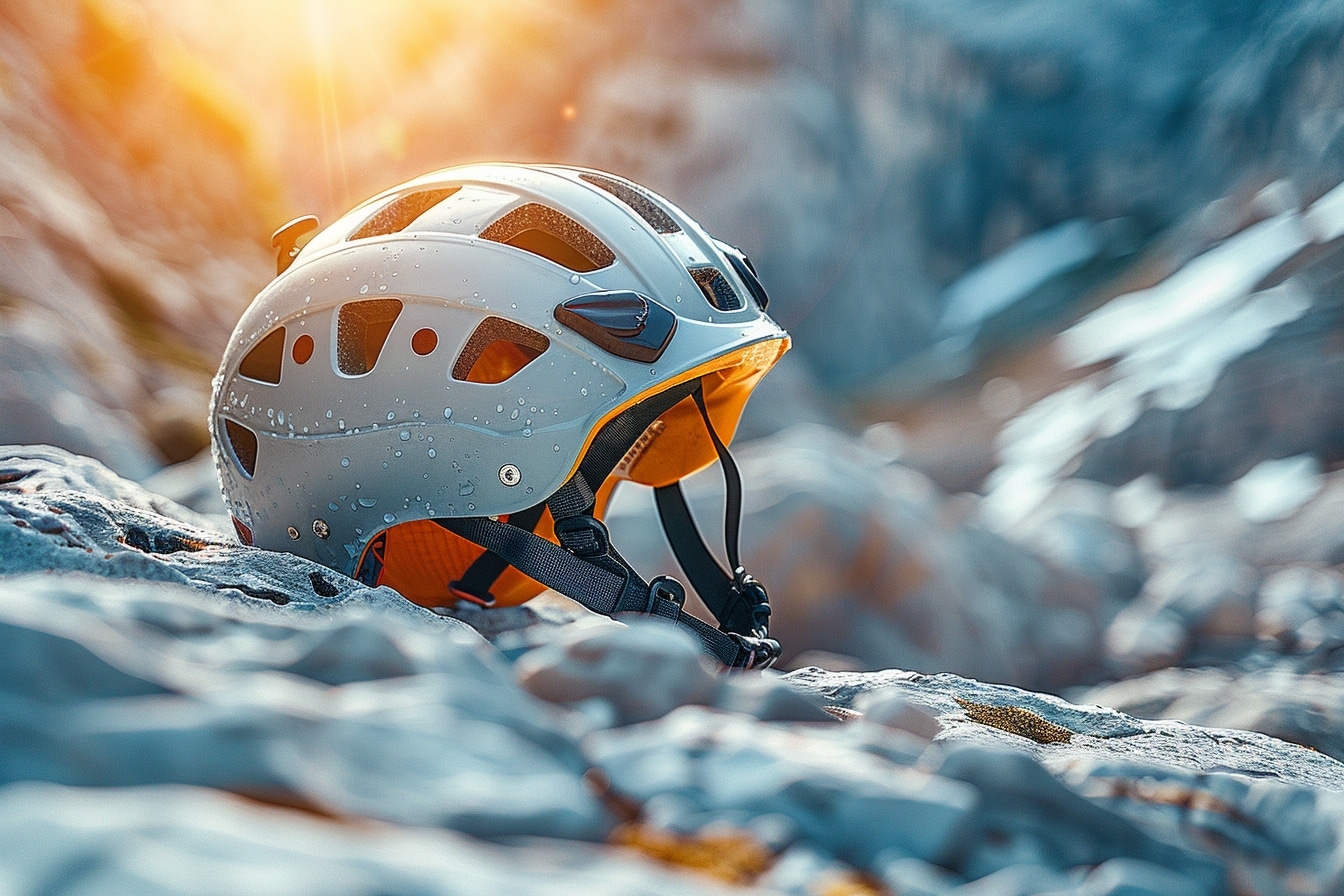Essential Gear for Canyoning: A Comprehensive Guide to Safe and Exciting Adventures

Discover the essential equipment for optimal canyoning. From neoprene wetsuits to specific footwear, dive into the heart of the accessories that will enable you to fully experience this aquatic and rocky adventure in complete safety.
Essential equipment for canyoning:

Canyoning is an activity that combines thrills and immersion in nature. To get the most out of canyoning, you need the right equipment. Here’s a list of essential equipment for safe and comfortable canyoning:
Neoprene wetsuit
The neoprene wetsuit is the canyoneer’s basic equipment. It provides optimum thermal protection and shields the body from friction and impact. A quality wetsuit is essential to avoid hypothermia in the cool waters of the canyons.
Technical canyoning shoes
Canyoning shoes offer optimum grip on wet and slippery rocks. They are fitted with special soles that guarantee a secure grip in water passages. Appropriate footwear ensures greater safety when abseiling and jumping into the water.
Protective helmet
Helmets are an essential part of the canyoneering kit. It protects the head from possible shocks caused by falling rocks or impacts during descents. For optimum protection, it’s essential to choose a lightweight, hard-wearing helmet that fits snugly.
Harness and descender
A harness and descender are essential for canyoning abseils. It ensures safety during abseiling, and enables precise control of descent speed.
Waterproof bag
A waterproof bag is essential to protect personal belongings and equipment from water infiltration. It keeps your belongings dry for the duration of the activity. Make sure you choose a quality, water-resistant bag with sufficient capacity to carry your belongings in complete safety.
First-aid equipment
Finally, compact, canyoning-specific first-aid equipment is a crucial safety factor. It can include bandages, disinfectant, a survival blanket, a specific first-aid kit, etc. All in all, canyoning is an exciting adventure that requires good preparation and the right equipment. By properly equipping yourself with the essentials listed above, you’ll be able to enjoy your canyoning escapades to the full, while ensuring the safety of you and your group. Don’t forget that practicing this extreme sport also requires a good level of physical fitness and knowledge of abseiling techniques. Happy descents!
Neoprene wetsuit
Optimum protection and comfort
When it comes to canyoning, a neoprene wetsuit is essential to protect you from the elements and provide optimum comfort during your descent. Choosing the right neoprene suit can make all the difference between a pleasant outing and an unpleasant experience. Make sure you select a wetsuit that will keep you warm and protected throughout your aquatic adventure.
Thickness and flexibility
A crucial aspect to consider is the thickness of the neoprene wetsuit. Depending on water and air temperature conditions, you’ll need to opt for the right thickness. A thicker neoprene suit will be ideal for colder waters, while a thinner suit will suit milder temperatures. You should also ensure that your wetsuit is flexible enough to allow easy movement during canyoning descents.
Waterproofing and durability
For maximum protection, make sure your neoprene wetsuit is perfectly watertight. Welded seams and watertight zippers are essential to prevent water infiltration. Opt for a high-quality, durable, wear-resistant neoprene wetsuit to ensure longevity despite rubbing against rocks and the various obstacles encountered while canyoning.
Fitting and sizing
The fit of a neoprene wetsuit is crucial for optimum protection. Make sure your wetsuit fits snugly around your body, neither too tight nor too loose, to avoid water ingress and allow freedom of movement. Take into account not only the size, but also the cut of the wetsuit for optimum comfort throughout your whitewater activity. In conclusion, choosing the right neoprene wetsuit for canyoning is essential to enjoy this activity to the full in complete safety and comfort. By taking into account criteria such as thickness, flexibility, waterproofing, durability, fit and size, you can select the ideal neoprene wetsuit to accompany you on your canyoning descents. Don’t hesitate to invest in quality equipment for memorable experiences in the heart of torrents and waterfalls.
Helmet

When it comes to canyoning adventures, safety is always a top priority. Of all the equipment you’ll need to practice this sport in complete safety, the helmet occupies a vital place.
Protection against falls and impacts
When canyoning, there’s always the risk of falling, hitting a rock face or falling from a height. Wearing a sturdy, well-fitting helmet can prevent serious head injuries in the event of an incident. It provides an essential barrier between your skull and potentially dangerous external elements.
Preventing injuries in whitewater
In addition to the dangers of falls and impacts, canyoning often involves moving through turbulent waterways. In the event of a fall, slip or collision with submerged rocks, helmets offer crucial protection against head injuries caused by underwater obstacles.
Visibility and signage
In addition to protecting your head, canyoning helmets can also be used to improve visibility and signage for your partners. Opt for a brightly colored or fluorescent helmet to be easily spotted in rough water or rocky environments.
Comfort and practicality
Modern helmets designed for canyoning offer a good balance between protection and comfort. With precise adjustment systems, absorbent foams and adequate ventilation, these helmets ensure not only your safety, but also your well-being during your aquatic adventures. In short, helmets are an indispensable part of canyoning equipment to guarantee your safety and protect you from the potential dangers associated with this extreme sport. Investing in a quality helmet and wearing it systematically during your canyoning outings will enable you to enjoy this activity to the full, while minimizing the risks to your physical integrity.
Harness
A harness is an essential piece of equipment for canyoning. This safety equipment supports the canyoneer’s body and helps secure ropes during abseiling and tricky passages.Features to look for in a canyoning harness:– Versatility: Make sure the harness is adapted to canyoning, with specific buckles and attachment points for abseiling.
– Comfort: Choose a harness with padding around the waist and thighs to reduce chafing and pressure points during long descents. – Durability: Choose a harness that is resistant to water and rubbing against rocks, to ensure its longevity.
– Adjustments: Check that the harness has simple, effective adjustment systems to suit your body shape.Tips for using a harness in canyoning:– Before each outing, check the general condition of your harness, especially the seams, buckles and straps. – Make sure the harness fits properly around your waist and thighs to avoid any risk of slipping during abseiling.
– During abseiling, regularly check your position on the rope and make sure that the buckles on your harness don’t jam. In conclusion, choosing a quality harness adapted to canyoning is essential to guarantee your safety and comfort during canyoning trips. Take the time to select a model that meets your needs, and be sure to maintain it properly to prolong its life. Above all, don’t forget that a harness is an essential piece of safety equipment that will enable you to enjoy your whitewater adventures to the full.
Descender
See this post on Instagram
In canyoning, the choice of descender is crucial to ensure safety and comfort during abseiling. There are several types of descender, each with its own characteristics and specific features. Here’s an overview of the main types of descender used in canyoning:
The figure-of-eight descender
The figure-of-eight descender is one of the most commonly used descenders in canyoning. Its characteristic figure-of-eight shape ensures efficient, progressive braking during abseiling. It’s a versatile descender, suitable for beginners and experienced climbers alike. Its aluminum or steel structure makes it a robust and reliable piece of equipment.
The tube descender
The tube descender, also known as the V-shaped descender, is another type of descender widely used in canyoning. Its tube or V-shape offers precise, stable braking, ideal for controlling descent speed. Some models of tube descenders feature “horns” to block the rope if necessary, offering additional safety.
The plate descender
The plate descender is a more recent type of descender, offering great versatility and optimal braking. Its wafer-like structure ensures smooth, even braking, while remaining compact and lightweight. Some models are equipped with slits to facilitate rope passage, offering additional comfort during abseiling.
The self-locking descender
The self-locking descender is an essential piece of safety equipment in canyoning, allowing the rope to be blocked in the event of a fall. There are several types of self-locking descender, such as the Descendeur Stop, the Huit antichute or the Shunt. In conclusion, the choice of descender for canyoning will depend on the climber’s level of experience, the nature of the terrain and personal preferences. It’s essential to master the use of your descender, check its condition regularly and follow the manufacturer’s recommendations to guarantee safe practice. Each type of descender has its own advantages and specific features, so it’s important to choose the one that best suits your needs and your canyoning practice.
Comments
Leave a comment